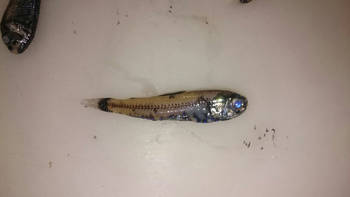After three days of steaming, we've arrived over the Wüst set of seamounts. In this area we are planning to study two seamounts. We expected the first seamount to have its top at about 500 m, but unexpectedly our mapping shows a much deeper scenario with a vast plain at about 1000 m depth bordered by 100 m high cliffs.
All the researchers are eager to investigate this new sampling station. As the video system approaches the seafloor, we glimpse a white, sandy bottom - something that would be quite common in shallow water of a tropical island. We also observe a regular pattern of ripple marks that usually form due to the force of the waves. However, the sand here is most likely composed of planktonic foraminifera shells, which have accumulated over the years and the ripple marks have formed by the constant action of the currents.
As we move towards the rocky cliffs, the number of gorgonians increases while fish are only occasionally sighted. The wide, sandy plain offers a first opportunity to use the bottom trawl, even if the presence of scattered rocky aggregations might damage the net. As a matter of fact, our fears become reality as the net is hauled showing clear evidence of being seriously damaged.
Only few mesopelagic fish and invertebrates are captured, and the team works until late night to identify and preserve the specimens.

